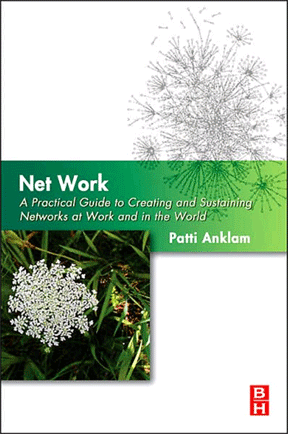I have written recently about the difficulty of “selling” or introducing network analysis projects. A couple of developments this week. Colleague Catherine Shinners alerted me to the recent publication of Deloitte’s Human Capital Trends 2016 report and especially a blog post, The New Organization: Different By Design by Josh Bersin (one of the report’s editors) that summarizes themes in the report. Both say (not loudly, nor in BIG LETTERS) that organizational network analysis (ONA) is something that firms will increasing need as work and management practices shift.
What shift? As has been predicted for many years, it is apparently now happening that companies are beginning to see their organizational structures in terms of networks of teams and that the organization chart as we know it is becoming obsolete. Another colleague, Jon Husband, has popularized the concept and importance of wirearchies. In fluid environments, it is important to be able to trace paths of knowledge through a company in order to know “who to call for what.” The Deloitte report offers one prescription for designing the new organizations: to “consider performing an organizational network analysis.”
As those of us long in ONA know, a network analysis can tell us more than just who to call for what, it can also show us how important certain people might be in influencing change efforts or in bringing disjointed parts of a company into collaboration. I should maybe do a longer blog on that, but as I am pressed for time today I want to highlight a second fleeting moment of fame that might get more attention because it is an analysis of a popular television series, the Game of Thrones.
It appears that another group of mathematicians have used social network analysis to analyze the characters and their intricate relationships to determine which character is the most important and to try to forecast the trajectory of that character going forward. As a mathematical exercise, the results provide great examples of network analysis and the ways that math can be applied. One of the study’s authors, Andrew J. Beveridge, admits that it is a fanciful application of network science, but that it is “the kind of accessible application that shows what mathematics is all about, which is finding and explaining patterns.”
The legend accompanying the image summarizes the centrality metrics that are available from a network analysis. The lines are created based on a characters name occurring within 15 words of another characters name. The community colors, page rank, betweenness centrality, and weight are all metrics available in an analysis to highlight, in any kind of network, principal actors and relationships.
This is not the first instance of using SNA to map “GoT” (a longer post, Game of Nodes, is almost a year old), nor the first use of SNA to map characters in stories. The dataset for the analysis of Les Miserables is generally used in courses that teach Gephi, one of the SNA tools and there are numerous examples of how it can be used.
But as for Bersin at Deloitte and the folks at Quartz, anything that makes network science, and network analysis more visible and interesting is encouraging. Two in a week is pretty special. Thanks.


